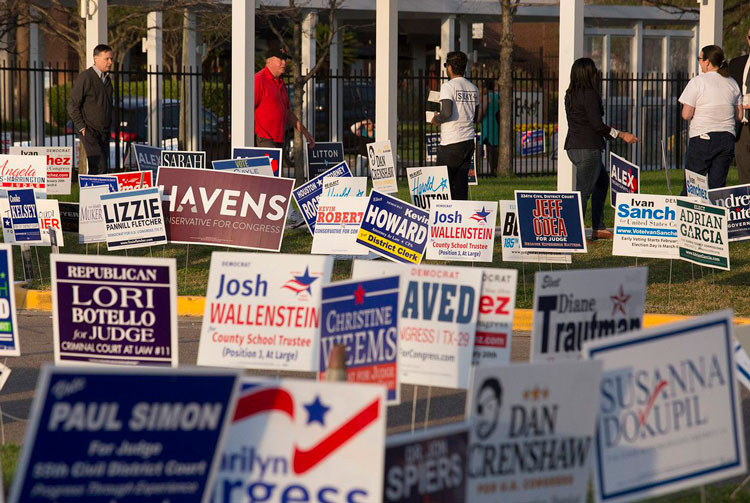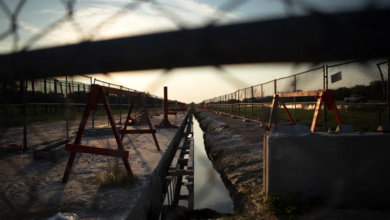
Analysis: A Viewer’s Guide To The 2018 Texas Elections
![]() Texans will start casting ballots in less than eight weeks, and campaigns are turning their attention from raising money and organizing to those voters: winning their support, revving them up and getting them to the polls. The stakes are big.
Texans will start casting ballots in less than eight weeks, and campaigns are turning their attention from raising money and organizing to those voters: winning their support, revving them up and getting them to the polls. The stakes are big.
Labor Day doesn’t mark the start of the political season; political season never seems to stop. But it is a typical turning point — a date when campaigns that have been building organizations and grubbing for campaign money redirect their attention to the voters who’ll decide the winners and losers.
Texans will be casting ballots in the 2018 general election in less than eight weeks, when early voting begins on October 22. The names are set. Here are some questions these elections should answer.
Is Texas still red, and how red is it?
Nobody likes being taken for granted, although winners take it better than losers. Texas isn’t at play in national elections — except as a fundraising opportunity — because the assumptions about how it will vote are so certain.
Democrats haven’t won a statewide race since 1994. Libertarians and other third parties have never prevailed. It’s red. It’s in the bag. Move on to the next swing state.
A purple Texas will emerge eventually, according to folk wisdom. There was a time when Republicans could barely ask strangers for directions in Texas: Look at them now.
Republicans still have the upper hand, by most accounts. But Democrats are enthusiastic — particular about the U.S. Senate race between Democrat Beto O’Rourke, Republican Ted Cruz and Libertarian Neal Dikeman (never ignore a third-party candidate in a race that might be close).
If Texas remains red, reset your alarm clock for two years. If a Democrat slips by in a statewide race or gets close enough to scare the majority party, you’ll start to see outsiders — with money — take an interest in Texas politics again.
Partisan politics is noisier than it’s been in recent cycles, but is it really different?
It’s different in at least one way: The president is using most of the political oxygen. That’s good for Republicans in general — Texas voters, according to the University of Texas/Texas Tribune Poll, are firmly behind Donald Trump.
But it’s hard on individual candidates across the spectrum who are struggling to grab the attention of voters who are riveted on the activities of the president to notice.
What’s most likely to change in Texas because of these elections?
The balance of power between the governor, the Texas Senate, and the Texas House. During the last two sessions, House Speaker Joe Straus and Lt. Gov. Dan Patrick were often at odds, and Gov. Greg Abbott took the Senate’s side in many high-profile fights.
The Republican majority in the Texas Capitol got a lot done in spite of their differences, but some legislation dear to one side or the other stalled.
The elections could change the mixes of Republicans and Democrats in the Legislature, forcing some new political calibrations from the leaders — or it could cement the differences now in place.
What’s going to happen in the House?
The odds are better for Democratic pickups than for Republican pickups in the elections, and the 150 state representatives who take their oaths of office in January will quickly follow by electing a new speaker to replace Straus, who decided not to seek reelection.
The results of that contest for speaker — which is already well underway — will set the tone in the lower chamber and in the relationships that institution has with the Senate and the governor. Among other things, it will provide a quick read on whether the House wants to go along to get along or wants to keep its independence.
In the Senate?
With a Republican supermajority in place, Patrick has maintained a strong grip on the Senate.
A trio of races will determine whether he’ll remain on solid ground in the next session: a special election in a huge Texas-Mexico border district next month, a seat now held by the Democrats; and two incumbent Republicans in competitive districts in Dallas and Tarrant counties.
Republicans have 20 Senate seats now and need 19 to maintain a reliable supermajority. They’d rather have 20, or even 21.
In the congressional delegation?
The question, really, is whether Texas will still have 27 Republicans and 11 Democrats in its delegation when Congress convenes in Washington in January.
Cruz is under siege, and three Republican incumbents in the U.S. House are running in districts where the Republican president lost to Hillary Clinton in 2016. There are skirmishes in a handful of other Republican-held districts where the numbers hold more hope for the incumbents, but where Democrats think they smell opportunity.
In the statewide offices?
Gov. Greg Abbott leads the state ballot for the Republicans. He’s been elected statewide to the Texas Supreme Court, to the attorney general’s office and the governor’s office.
Former Dallas County Lupe Valdez, his Democratic challenger — has been elected four times — but only in Dallas County. Mark Tippetts, a Libertarian, is the only other candidate.
Here’s the thing with statewide races: The fortunes of candidates down the ballot, from lieutenant governor to the Texas Court of Criminal Appeals, depend on the performance of their parties’ candidates at the top of the ballot. If the frontrunners have a good day, they have a good day.
If not, not. And only when it’s a mixed or close result at the top — it’s been a while since Texans have seen one of those — do their own efforts truly make a difference.
Recent polls show a close race for Senate and a potential blowout in the governor’s race. Here’s the question for the candidates downstream: Which race will have the most influence?
Is that U.S. Senate race for real?
Here’s what is real about it: It’s got your attention. It’s got national attention, from media, from politicos, from the people who want Texas to remain the big red foundation stone of Republican politics in presidential races to the people who’d like to bust that boulder into pebbles.
It’s the only race in Texas that — for the moment — includes candidates who can be named in conversations about future national politics without snickers.
It’s the race that will guide future decisions about whether it’s possible to run a competitive race in a general election in Texas and whether it’s even worth trying — whether it’s worthwhile for major Democratic efforts, and whether Republicans can continue to rely on the wealth of conservative sentiment here without investing a lot of money or resources to nurture it.
Trump.
Don’t forget that the most important figure in the election isn’t even on the ballot. His standing, like any president’s standing in a midterm election, is on the line. And the results will be read by many as a referendum on what Donald Trump has done since his own election two years ago.
PHOTO CAPTION: Voters in Houston arrive to cast ballots during the last hour of voting in the primaries on March 6, 2018. Michael Stravato for The Texas Tribune
This article was originally published in the Texas Tribune.






